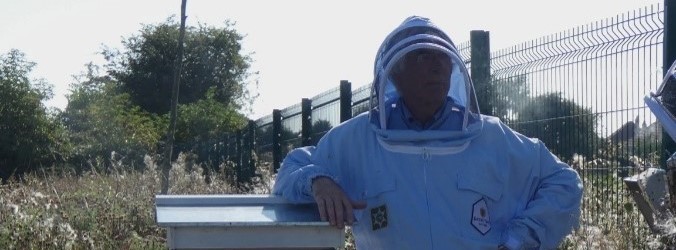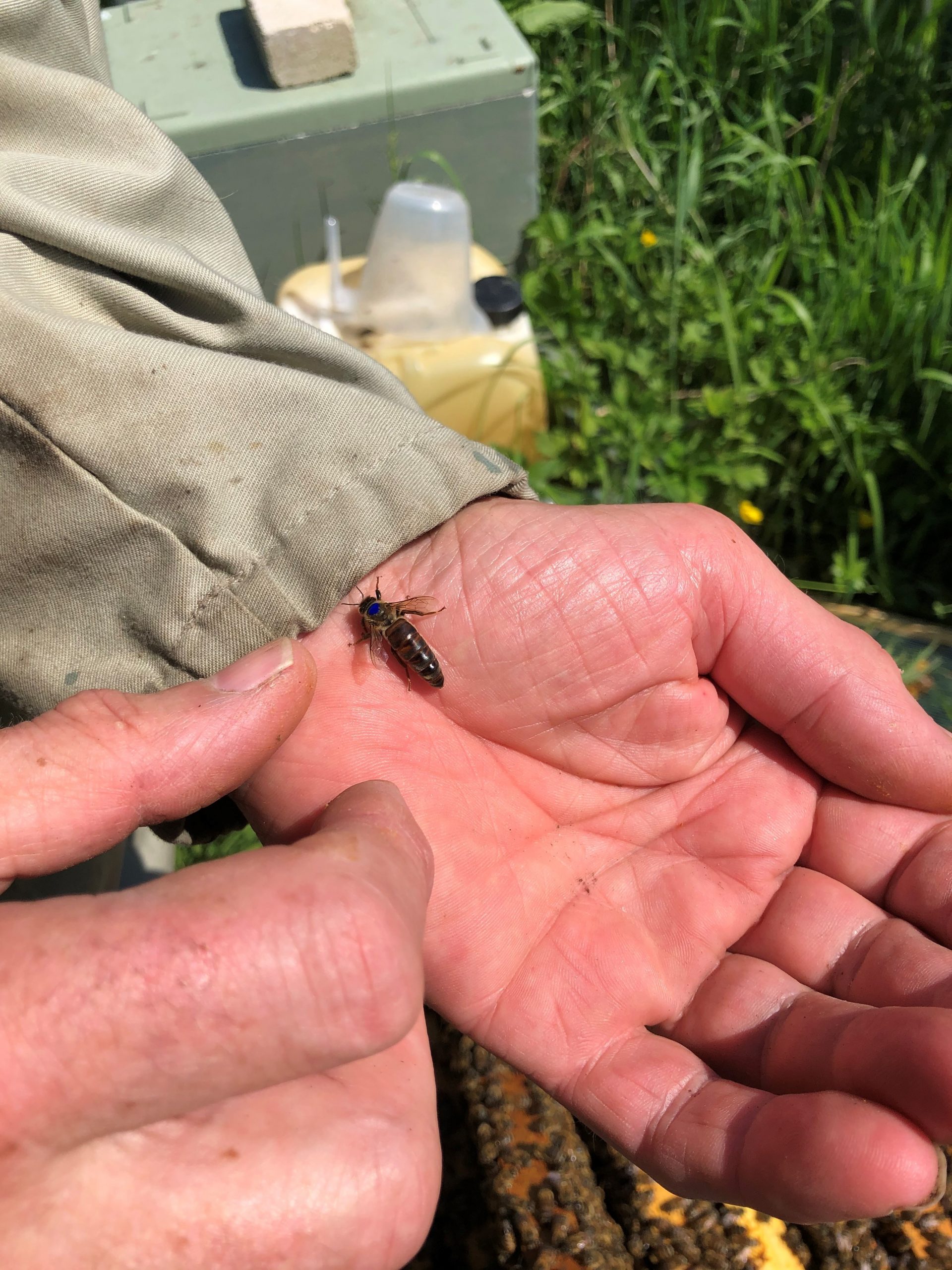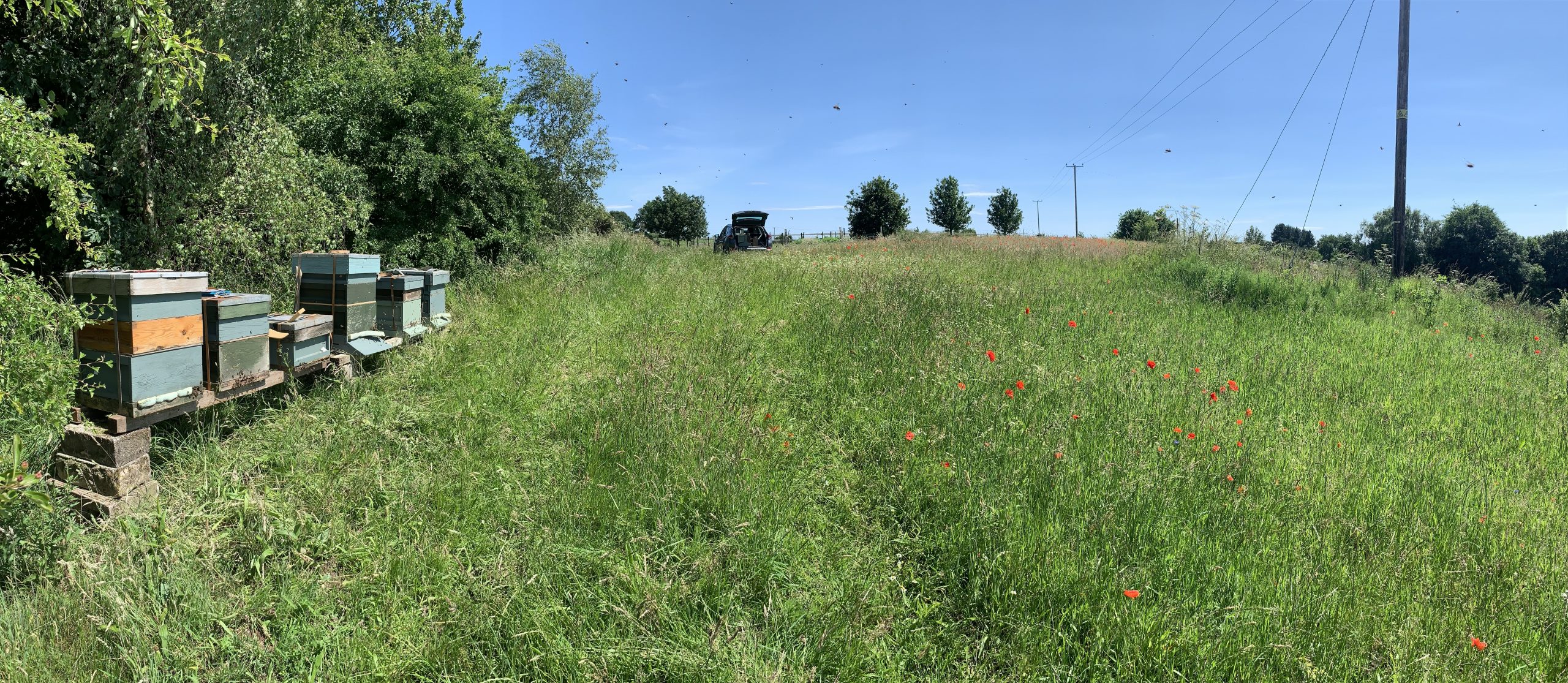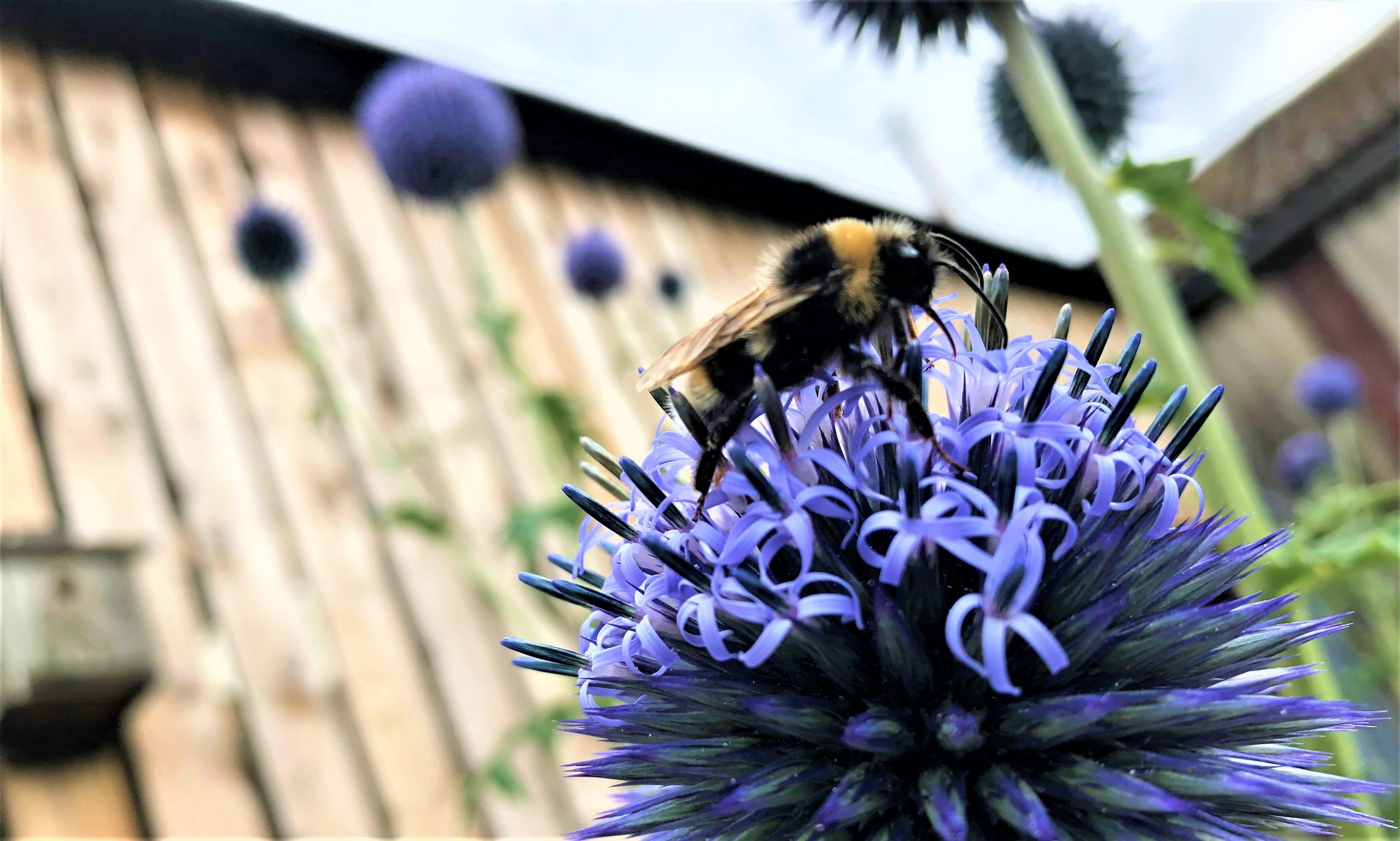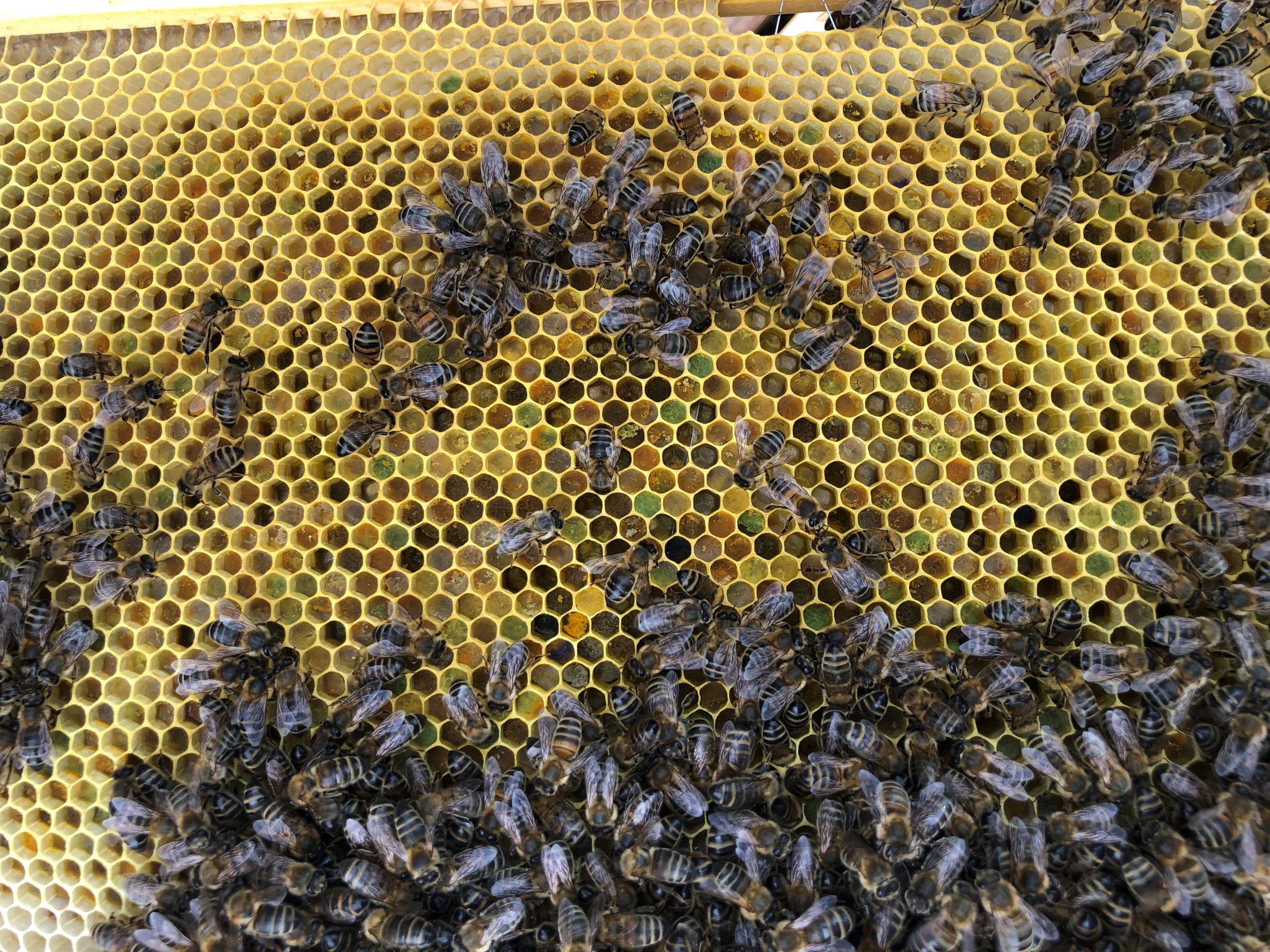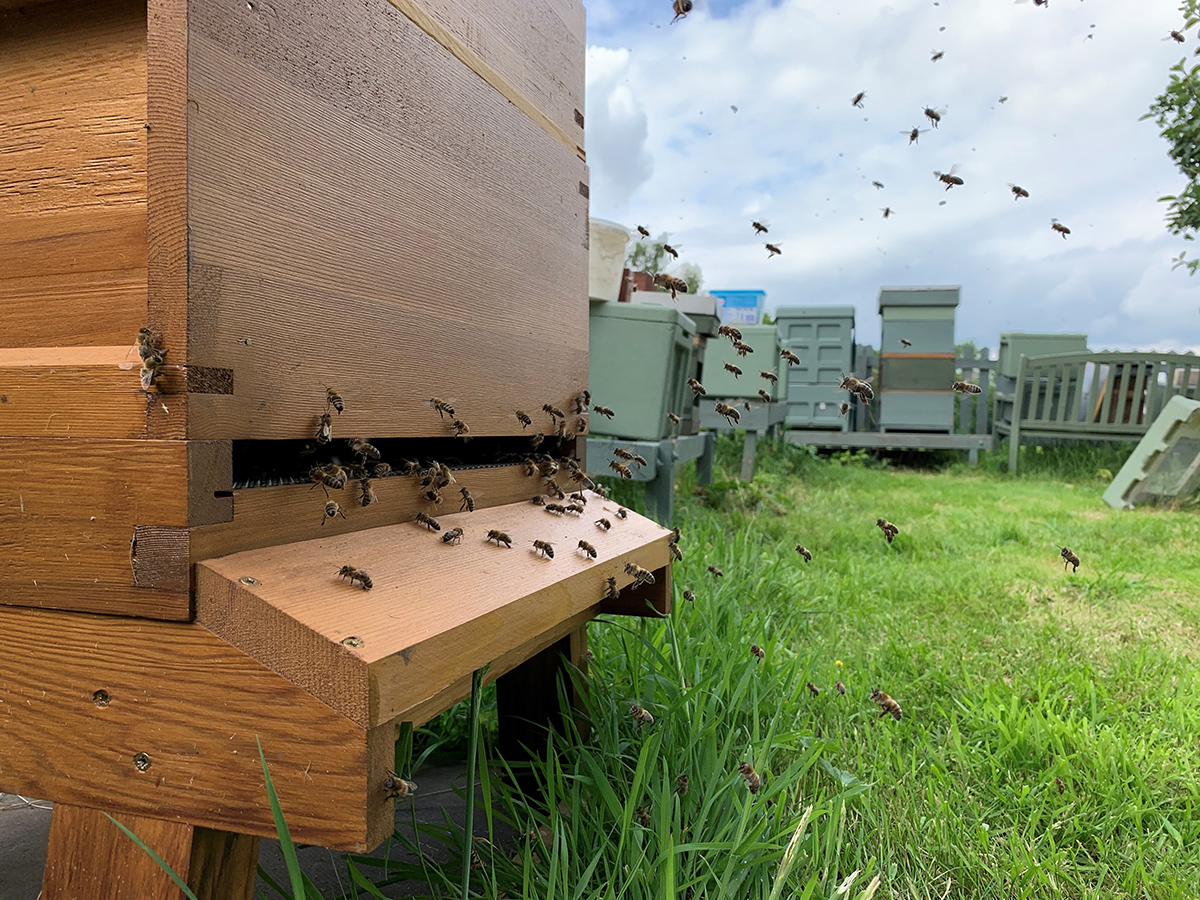The bees eventually came home as I left school. I did not know what to do after school so enjoyed a gap year, pre university, working at The Ministry of Agriculture Fisherys and Food (MAFF), thanks to Beo, now known as DEFRA. I worked in soil science but spent every opportunity to visit the entomology department. After work it was bees, curtesy of Beo. I learned about wing morphometry and bee breeding. How to select the best breeder queens and how to propagate them. The importance of record keeping was fundamental to improving bees so BIBBA cards were my chosen system having seen Beo use them from their inception. His writing was so tiny that he crammed lots of additional information on the cards but registering the percentage of black workers and docility, at each visit became critical in tracking the bees’ parentage. This was before DNA was discovered. It is interesting to see how, given queens produce varying levels of ginger banded and black workers over the years. In those early days, before varroa, queens regularly lived productive lives for three or four years. These were the tried and tested queens who became breeder queens. Selecting by colour and habit is still my preferred method of choosing breeding stock. Interestingly Beo talked about avoiding pests and diseases from abroad by importing bees. As an entomologist he was well travelled, and varroa was on his radar over forty years ago, even before it arrived in the UK.
Beo’s bees were housed in single standard national hives. His hive stands were made of angle iron, similar to large scale Meccano. Glass quilts were used on some hives. When inspecting the bees he never used gloves. I related my first experience of being invited by the allotment beekeeper to visit his out apiary. In those days a simple hat and veil was used. No full length sheriff suits were available. I was advised to tuck my trousers into my socks as bees travel up-hill given the chance! Good advice but he failed to tell me that bee stings can go through socks! Alas I got badly stung long before I met Beo. I also realised then why Mr Rogers imported his Italians! That evening my ankles swelled enormously and the following day my shoes didn’t fit! Beo explained that it is not the indigenous bee that caused aggression but the hybrid f2 generation that was the problem. Imported queens bring their own genes and when they breed, their drones cause hybridisation with local beekeepers’ bees. These drones influence the local bee population creating serious problems for local bee improvement groups by cross breeding with our queens. Thus, the home breeder experiences aggression in his bees often in the F1 generation. The F1 generation of the imported queen is often very productive and similar to the original mother import, because the import is relatively pure bred in its own environment. This is why Mr Rogers biennially imported new queens. However, in the F2 generation things are not so ideal. The F2 generation comes from daughters of the imported queen. These daughters produce drones similar to their mother’s but their daughters (the worker bees) have mixed genes as a result of what she mated with. The drones are not influenced by the mating of the queen as they derive from unfertilised eggs. These drones continue to damage breeding efforts by local bee improvement groups for several years. If importation of queens could be stopped, our own naturally adapted bees would eventually revert to type. DNA testing can now prove that AMM is alive and well, contradicting the belief that Isle of Wight disease caused its extinction. After years of breeding Beo had docile bees living in single brood chambers creating arcs of pollen around the brood and stores of food above. Originally Beo lost his gloves and decided to try to breed docile dark bees. My experience of Beo started some years after he had achieved a much-improved bee and following his guidance learned to handle bees without gloves. He taught me to be gentle, slow, and confident. To use minimal smoke allowing cool air a moment to calm the bees. I always light my smoker but very rarely use it preferring not to fill the bees with polluting smoke. I would not choose to breath in smoke so why fill a bee with it?
I joined The Village Bee Breeder Association (VBBA) as a life member for £15 and continue to subscribe to the principles and policies of the group. Although changes in the name have been agreed BIBBA evolved as the British Isles Bee Breeders Association becoming Bee Improvement Bee Breeders Association, improving bees and resisting the importation of none native bees remains. I will always be grateful to Beo for founding BIBBA and being my mentor and guide in those early years.

